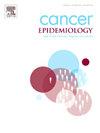哥伦比亚黑色素瘤患者的发病率和生存率
IF 2.3
3区 医学
Q3 ONCOLOGY
引用次数: 0
摘要
黑色素瘤占所有皮肤癌的比例不到2% %,但表现出高度侵袭性,迅速导致转移。各种个体和环境风险因素与其发生有关。方法采用哥伦比亚卫生部综合社会保护信息系统(SISPRO)的数据进行队列研究。纳入了2019年新诊断的黑色素瘤患者。分析了人口统计学、临床和死亡率特征,并计算了粗发病率和年龄及性别调整后的发病率。使用Pearson相关系数和方差分析来评估人群海拔高度与黑色素瘤发病率之间的关系。采用Fine and Gray模型估计生存率。结果2019年医保系统共报告黑色素瘤新发病例5255例。粗发病率为每10万居民22例,年龄调整后发病率为21例。总体三年死亡率为18.8 %,黑色素瘤导致的死亡率为7 %。正如预期的那样,侵袭性黑色素瘤、慢性阻塞性肺病和男性患者的死亡率更高。黑色素瘤发病率与更多的紫外线辐射暴露呈正相关,这是由城市的海拔决定的。结论哥伦比亚黑色素瘤发病率较高,地区差异明显。紫外线照射和海拔高度是关键因素。本文章由计算机程序翻译,如有差异,请以英文原文为准。
Incidence and survival of patients with melanoma in Colombia
Background
Melanoma accounts for less than 2 % of all skin cancers but exhibits highly aggressive behaviour, rapidly leading to metastasis. Various individual and environmental risk factors are associated with its occurrence.
Methods
A cohort study was conducted using data from the Integrated Social Protection Information System (SISPRO) of the Colombian Ministry of Health. Patients with newly diagnosed melanoma in 2019 were included. Demographic, clinical, and mortality characteristics were analysed, and crude and age- and sex-adjusted incidence rates were calculated. The association between the altitude of populations and melanoma rates was evaluated using Pearson’s correlation coefficient and an analysis of variance. The Fine and Gray model was used to estimate survival.
Results
In 2019, 5255 new cases of melanoma were reported in the health insurance system. The crude incidence rate was 22 cases per 100,000 inhabitants, and the age-adjusted incidence rate was 21. The overall three-year mortality rate was 18.8 %, with melanoma-attributable mortality at 7 %. As expected, the mortality rate was higher in patients with invasive melanoma, COPD, and among men. Melanoma rates were positively correlated with greater exposure to UV radiation, determined by the altitude of the municipalities.
Conclusion
Colombia has high melanoma incidence rates, with significant regional variations. UV radiation exposure and altitude are key factors.
求助全文
通过发布文献求助,成功后即可免费获取论文全文。
去求助
来源期刊

Cancer Epidemiology
医学-肿瘤学
CiteScore
4.50
自引率
3.80%
发文量
200
审稿时长
39 days
期刊介绍:
Cancer Epidemiology is dedicated to increasing understanding about cancer causes, prevention and control. The scope of the journal embraces all aspects of cancer epidemiology including:
• Descriptive epidemiology
• Studies of risk factors for disease initiation, development and prognosis
• Screening and early detection
• Prevention and control
• Methodological issues
The journal publishes original research articles (full length and short reports), systematic reviews and meta-analyses, editorials, commentaries and letters to the editor commenting on previously published research.
 求助内容:
求助内容: 应助结果提醒方式:
应助结果提醒方式:


